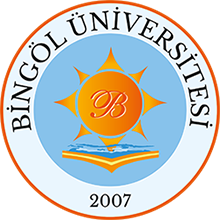A comparison of the inhibitory effects of anti-cancer drugs on thioredoxin reductase and glutathione S-transferase in rat liver
Date
2018Author
Ozgencli, I. and Kilic, D. and Guller, U. and Ciftci, M. and Kufrevioglu, O.I. and Budak, H.
Metadata
Show full item recordAbstract
Background: While Thioredoxin Reductase (TrxR) plays an important role in regulation of the intracellular redox balance and various signalling pathways, Glutathione S-Transferase (GSTs) enzymes belong to the detoxification family that catalyse the conjugation of glutathione with various endogenous and xenobiotic electrophiles. Since TrxR and GSTs are overexpressed in many cancer cells, they have been identified as potential targets to develop chemotherapeutic strategies. Method: The mitochondrial TrxR (TrxR2) enzyme and the cytosolic GST enzyme was purified from rat liver via affinity chromatography. After the purification, the in vitro inhibition effects of some anticancer drugs (cisplatin, calcium folinate, carboplatin, epirubicin hydrochloride, doxorubicin hydrochloride, paclitaxel, etoposide, fluorouracil, and methotrexate) were investigated on both enzymes. Since only methotrexate inhibits both enzymes among all the anticancer drugs, a molecular docking study was performed to determine the binding site and the binding affinity of methotrexate to the enzymes. Results: Firstly, TrxR2 and GST were found to have a specific activity of 0.436, 1765 EU/mg proteins with a yield of 39.20%, 31.28% and 207.6, 3516.6 of purification fold, respectively. While TrxR2 was strongly inhibited by all of the anticancer drugs, GST was not inhibited by any of the anticancer drugs except methotrexate. Conclusion: Both enzymes were inhibited by only methotrexate in rat liver, and methotrexate was well placed in the active sites of both proteins. Therefore, it may be argued that methotrexate may be a more effective anticancer drug than all other drugs used in this study against the multi drug resistance that will occur during chemotherapy. © 2018 Bentham Science Publishers.
URI
https://www.scopus.com/inward/record.uri?eid=2-s2.0-85063286056&doi=10.2174%2f1871520618666180910093335&partnerID=40&md5=3fcef1630481bbd46dfd65f8b07d28dbhttp://acikerisim.bingol.edu.tr/handle/20.500.12898/4415
Collections

DSpace@BİNGÖL by Bingöl University Institutional Repository is licensed under a Creative Commons Attribution-NonCommercial-NoDerivs 4.0 Unported License..













